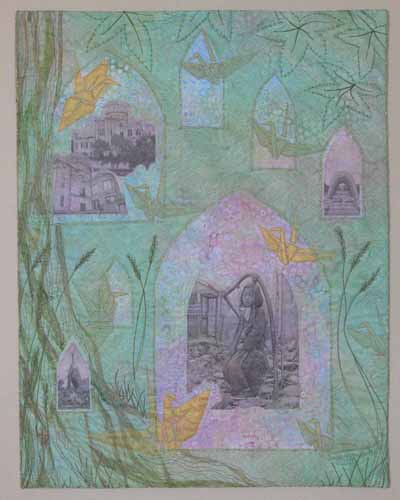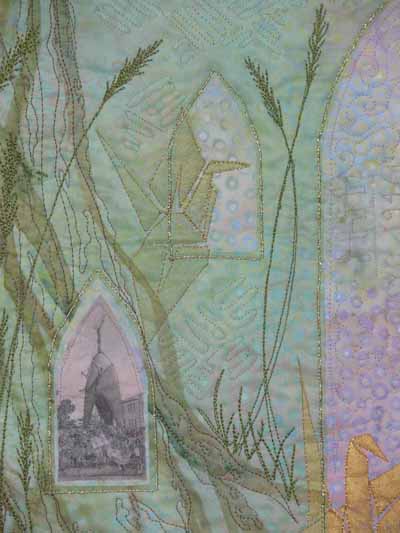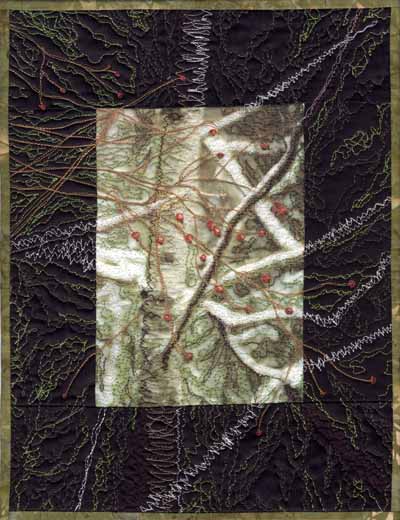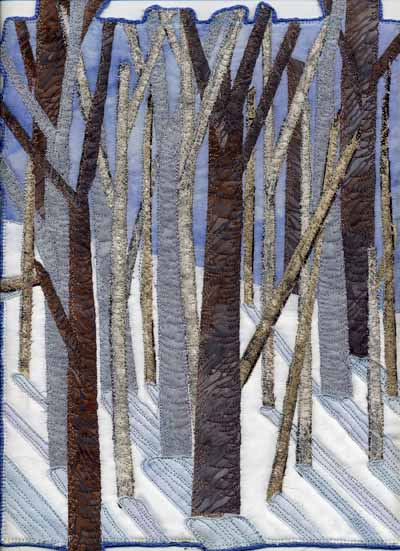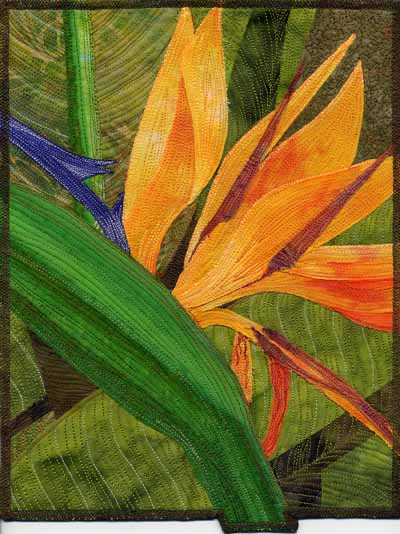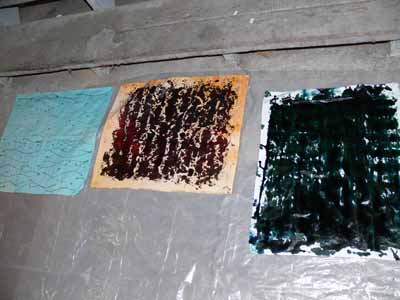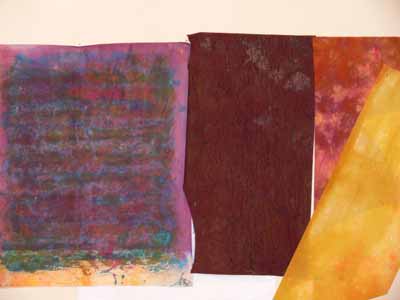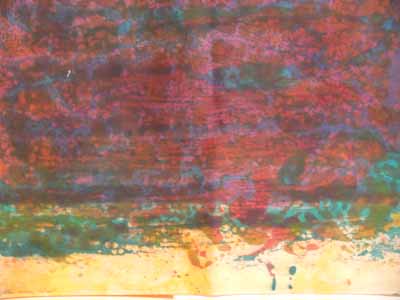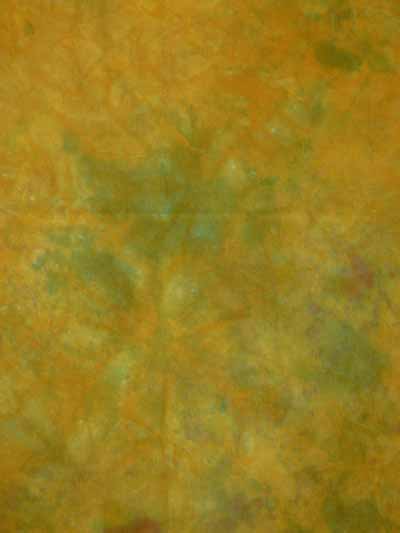Windows of Hope, a Journal Quilt for 2007
Saturday, November 3rd, 2007As I mentioned last month in my post about the book Creative Quilting: the Journal Quilt Project, this is the final year for this fantastic journey. Instead of making nine paper-sized quiltlets each month, this year’s assignment was to use three (or more) techniques used in journals in the book to create our 17×22 inch (vertical orientation) journal quilt. Here is my journal quilt for this year:
For several years, I have had lurking in my brain a quilt about peace, and the horrors of war, and its innocent victims. The need to create that quilt stems from a visit to Hiroshima in 1996 when my mom invited me to accompany her on a trip to Japan. She had served in Japan in 1946-47 with the US Occupying Forces, and fell in love with the country, its people and its culture. This quilt is a test-run for several techniques which I hope to use on the large Peace Quilt one of these years.
Mom has a photo album from her two years there, plus her travels to mainland China (before the Communist Revolution, which came two years later), Thailand and Cambodia. One photo in particular, above, was riveting: a somewhat melancholy girl sat on a make-shift swing someone had fashioned from the rubble of a bombed-out building in Tokyo, 1946. Mom purchased the photo from a Western photographer, but doesn’t know any more about it. For my first technique, I took a digital photo, manipulated it to improve sharpness and give a faded “old photo” look, and printed it on fabric. If ANYONE has any idea who took this photo, please tell me!
That photo alone, though, wasn’t enough to carry the quilt, so I decided to include some of my photos of the ruins of the Hiroshima dome, the cenotaph to mark the deaths of all the victims of the atomic bombs and the Children’s Peace memorial.
That memorial features an origami crane in the sculpture because cranes represent good luck and long life. That led to the second of my techniques: a thermofax screen.
A what you ask? Do many of you remember dittos from school, before we had photocopying machines? We the ditto masters were made with these machines that can also be used with a special plastic-coated mesh fabric and a carbon photocopy (or pencil drawing) to create a stencil. I ended up having to order away for the stencils (fabulous service from Pam Relitz of Flying Images, rockitz@tds.net), but can see that I need to save up to buy one of the antique thermofax machines so I can make my own screens! (If there is anyone out there in blogdom who has blogged the process with photos–Gerrie? Rayna? send me a link and I’ll add it here).
I made my origami cranes, photographed them, traced out the exact lines at the angle I wanted, and had several screens made, then used metallic and regular paints to screenprint onto the background batik fabric.
I was having trouble coming up with a coherent “whole”, however. In browsing the Creative Quilting book (while waiting for hubby who had just had rotator cuff surgery and was at post-op physical therapy), I spotted the ogival window shape in Larkin Van Horn’s piece and new I had my organizing element. I rooted through my sheer fabrics, intending to dye or paint something into which I would cut windows, when I came across a rejected but HUGE painted sheer piece (about 48×60 inches) that was the first attempt at one of the overlays for Tree Spirits 2: Song of the Solstice Grove (can be seen on my website here). As I tossed the piece over the batik the tree trunk landed on the left side of the quilt…PERFECT!
After sketching out the location of the windows on the quilt, getting a nice balance of large and small yet permitting the screenprinting underneath to be revealed, I made a paper pattern which I placed under an old storm window. I used a heat-tool (aka stencil cutter) to cut the windows in the sheer fabric. Since synthetic sheer fabric is notoriously wiggly, I lightly sprayed the sheer with basting spray to adhere it to the storm window before cutting; because the fabric was light, I could see the paper pattern underneath and cut the windows exactly in the correct places (a metal ruler helped on the straight edges!). I then placed the sheer over the background, couched (stitched) gold yarn around the windows, and quilted the entire piece.
The serendipitous placement of the treetrunk on the left led to the overall quilting design, with bark, grasses and leaves and branches. In the background of the overlay I used a basketweave pattern, while I used a swirly cloud motif inside the windows. Finally, I couched two twisted lengths of the gold “yarn” (more like a fine cord) to what would become the edges, added facings which were turned to the back, and stitched down the facings.
I hope you like it…and thanks to all who managed to read all the way to the end!

